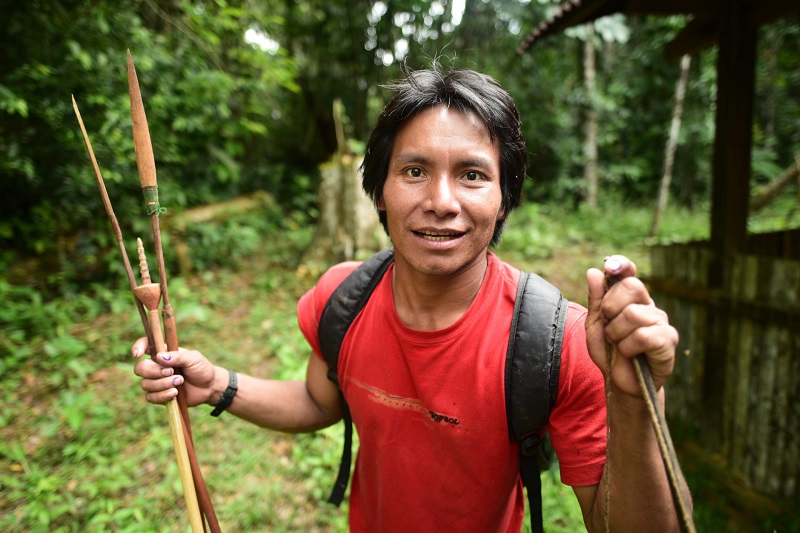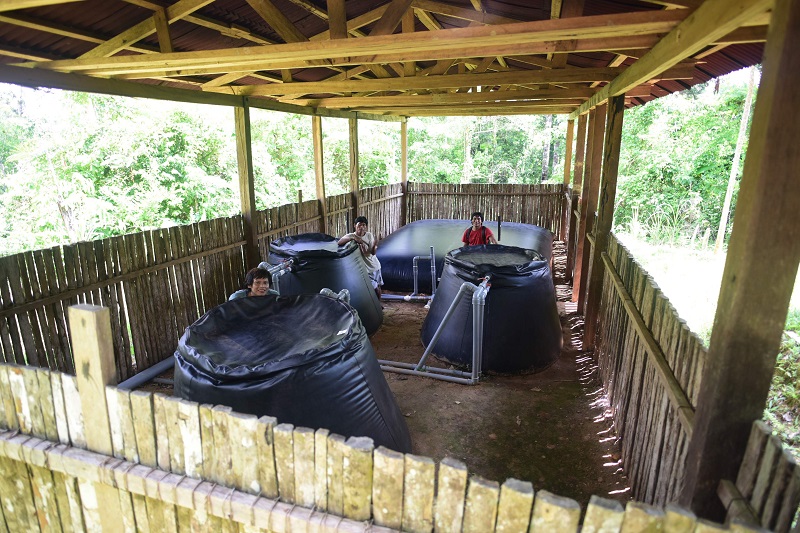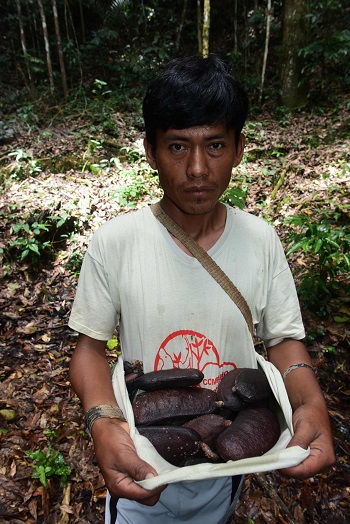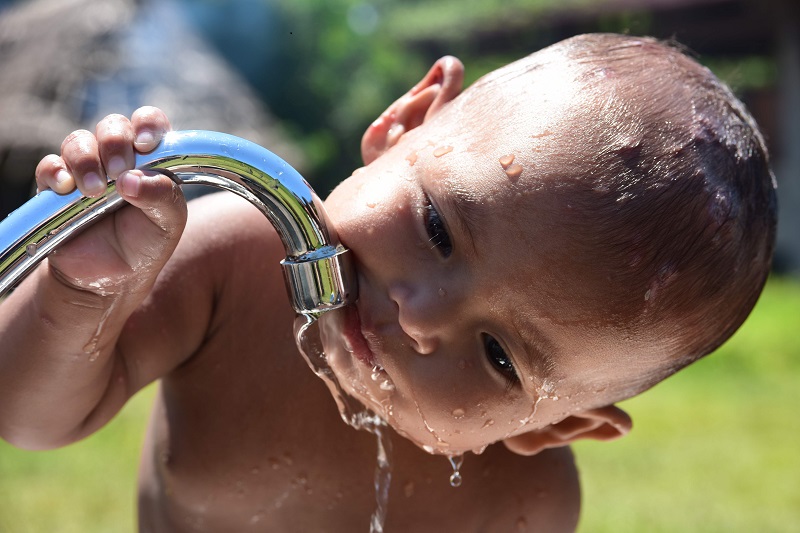
In 2016, I went to the Peruvian Amazon on assignment for National Geographic. I focused on a group of indigenous people, the Matsiguenka, living inside Manu National Park.
One of my sources was Alejo Machipango, a hunter, farmer, and member of the water committee for the village of Yomibato. Alejo is about 34, but I would have guessed his age at 22. He is married and has several kids. He is a jokester. He likes chewing coca, drinking manioc beer. He takes his arrows with him most places, just in case. I saw him shoot at some birds, but never hit one. And he always laughed when he missed.
One day, Alejo took me to see the spring where Yomibato gets its water. The water system in the village was installed by a charity called Rainforest Flow between 2012 and 2015. When I did my reporting in Manu, National Geographic hired Rainforest Flow to get me there, because they have their own boats and boat drivers.
A few generations ago, the Matsiguenka used to be more dispersed on the landscape. Each family lived apart, and households moved often. The whole community would gather together once a month, on the full moon, and have a big party with manioc beer. But more recently, many families decided to move to Yomibato to be near the school and clinic. As the community grew to several hundred, the local river and streams became contaminated with bacteria and waterborne illness became a chronic problem.

The newly-installed water system itself is a very simple slow sand filtration setup. Water is piped from a spring away from the main village to a series of three portable geomembrane tanks filled with sand and rocks. Microbes living on the sand gobble up bacteria, viruses, Giardia, Cryptosporidium, and parasites. The water is stored in a 30,000 liter bladder tank that is essentially a big tough pillow, then is distributed throughout the village through pipes. Every household has a tap. The whole system is gravity fed, so no pumps or electricity is required, and there are no moving parts. It is also light and easy to transport to the village by canoe, which is the only way to get it there, since it is not connected to any roads. The system was designed by hydrological engineer Humphrey Blackburn to be very easy to maintain. The water committee clean the filters every couple of months and repair pipe breaks, and that’s about it.

We cross the river by canoe, stop to look at the filters and reservoir, and then start climbing the foothills of the Andes towards the spring. When we get there, the spring itself looks like nothing. It is a wet spot in the ground. A pipe with holes in it is buried below the surface, I am told.
We sit down to rest in the hollows made by the huge buttressed roots of massive fig trees. Alejo says he knows a tree nearby that is fruiting, and he and his friend Alex disappear, then reappear with their t-shirts filled with brown seed pods, about five inches long. They are called azucar huayo in spanish; koveni in Matsiguenka. The water committee hack them open with machetes and begin eating the sweet brown fluffy stuff inside. It is almost too sweet.
I ask Alejo about laying the 16 kilometers of pipe the project required. “Everybody came to work,” he says. “The women came. We all suffered a lot.”
I ask him if it was worth it. Sometimes, I think, development projects are more about what rich people think a community ought to want, rather than what they actually do want. “If we had to do it again, we would.” Alejo says. “One of my children died of diarrhea, and I had it many times.”
He says this so matter of factly that I don’t say the kinds of things I would say if someone back home told me their child had died. I suppose that in a place where people have a dozen kids and where childhood mortality is somewhat more common than in my daily life, it is possible that the etiquette is a bit different. But in truth, I am stunned that this happy-go-lucky guy who looks like a teenager has lost a child. And as a mother, I feel that vaguely sick feeling you get whenever you hear about any child dying.

I wonder if he is on the water committee because his child died, or if he just thought he’d make a little money without having to leave the village. Leaving is the way most people make money in Yomibato, if they need some for soap or cooking pots or gasoline. Others simply do without money. But I don’t know how to ask him any more about this dead child.
We walk back along the pipe, and it is a hot day, like every day. When we get to the first house of the village, I stop and take a long cool drink from the tap.
These days, I give Rainforest Flow $20.00 every month. I think it is my way of telling Alejo I am sorry.